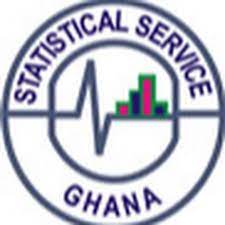More persons employed in the Industry sector in quarter 1, 2022 (217,000) transitioned to other sectors relative to the Agriculture (117,000) and Services (182,000) sectors.
According to the Quarter 3 Labour Statistics report by the Ghana Statistical Service, the Agriculture sector absorbed a net of about 54,000 persons, while the Services sector gained more than 38,000 persons from the industry sector across the three quarters.
The report further stated that between the first and second quarters, about 155,000 persons transitioned from formal employment to informal employment in both the second and third quarters of 2022.
The transition from informal employment to unemployment was, on average, five times more common than the movement from formal employment into unemployment.
Again, the report said over 89,000 employed persons in the informal sector in the first quarter transitioned to and remained in the formal sector in the second and third quarters.
Unemployment rates ranged between 13.4% and 13.9% across the three quarters, and it remained primarily an urban phenomenon.
Across the three quarters, about 157,000 persons experienced an unemployment spell, with close to 124,000 gaining employment in quarter 3 out of more than 377,000 persons who were unemployed in the first and second quarters.
Additionally, almost 90,000 persons outside the labour force in the first quarter transitioned to unemployment status in the second quarter and remained unemployed in the third quarter.
Number of unemployed persons, multidimensionally poor remain at 615,000
The report also showed that the number of persons who are unemployed and multidimensionally poor remained at an average of about 615,000 across the three quarters, with a marginal increase of close to 20,000 more persons between the second and third quarters.
However, the number of persons unemployed, food insecure, and multidimensionally poor decreased by 78,000 between the first and second quarters but increased by almost 55,000 in the third quarter.
Additionally, the report noted that among the top five regions with the highest NEET rates in the third quarter were Savannah (27.8%), North-East (24.3%), and Upper East (24.2%).
These regions had the highest percentage of young people who were not in employment, education, or training (NEET), which raised concerns about the country’s future workforce.
Latest Stories
-
CLOGSAG vows to resist partisan appointments in Civil, Local Government Service
1 hour -
Peasant Farmers Association welcomes Mahama’s move to rename Agric Ministry
1 hour -
NDC grateful to chiefs, people of Bono Region -Asiedu Nketia
1 hour -
Ban on smoking in public: FDA engages food service establishments on compliance
1 hour -
Mahama’s administration to consider opening Ghana’s Mission in Budapest
1 hour -
GEPA commits to building robust systems that empower MSMEs
1 hour -
Twifo Atti-Morkwa poultry farmers in distress due to high cost of feed
1 hour -
Central Region PURC assures residents of constant water, power supply during yuletide
1 hour -
Election victory not licence to misbehave – Police to youth
1 hour -
GPL 2024/2025: Nations thrash struggling Legon Cities
1 hour -
Electoral offences have no expiry date, accountability is inevitable – Fifi Kwetey
1 hour -
Ghanaians to enjoy reliable electricity this Christmas – ECG promises
2 hours -
Police deny reports of election-related violence in Nsawam Adoagyiri
2 hours -
‘We’re not brothers; we’ll show you where power lies’ – Dafeamekpor to Afenyo-Markin
2 hours -
EPA says lead-based paints are dangerous to health, calls for safer alternatives
3 hours

